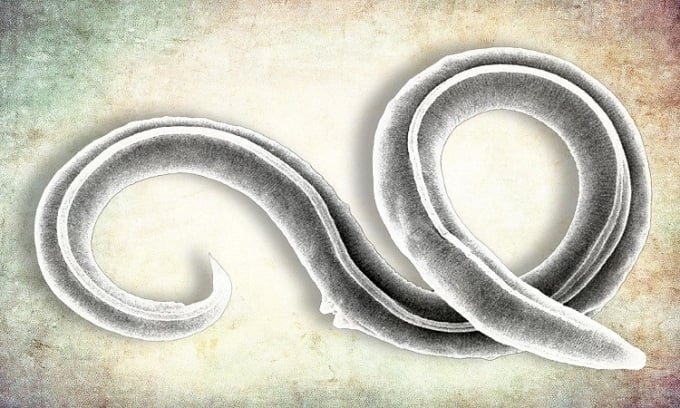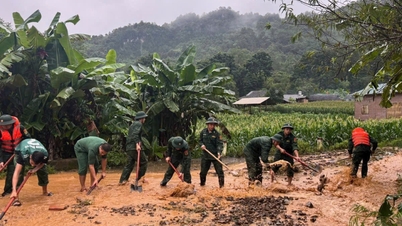Russia An ancient roundworm species has awakened after tens of thousands of years of hibernation in a fossilized squirrel burrow from the late Pleistocene.

Ancient roundworms revived from permafrost in Siberia. Photo: Times
A tiny worm has survived 46,000 years in the Siberian permafrost, tens of thousands of years longer than any other previously revived worm. The newly described species, Panagrolaimus kolymaensis , was discovered curled up in a fossilized squirrel burrow taken from permafrost near the Kolyma River in the northeast Arctic in 2002. Scientists revived the frozen nematode in 2018, but its age and species are unknown.
A study published on July 27 in the journal PLOS Genetics finds answers to these questions. "Survival in extreme environments for long periods of time is a challenge that only a few organisms can overcome," said a team of researchers from Russia and Germany. "Here, we demonstrate that the soil-dwelling nematode Panagrolaimus kolymaensis has been dormant for 46,000 years in Siberian permafrost."
Organisms such as nematodes and tardigrades can enter a state of dormancy, a metabolic process called cryptobiosis, in response to freezing or complete dehydration. In both cases, they reduce their oxygen consumption and metabolic heat production to undetectable levels.
The new nematode hibernated during the late Pleistocene (2.6 million to 11,700 years ago), a period that included the last ice age. Permafrost kept the creatures frozen and unthawed ever since. This is the longest recorded hibernation period for a nematode. Previously, an Antarctic nematode named Plectus murrayi frozen in moss and a specimen of Tylenchus polyhypnus desiccated in a herbarium lasted 25.5 and 39 years, respectively.
The researchers analyzed the genes of P. kolymaensis and compared them with the roundworm Caenorhabditis elegans, the first multicellular organism to have its entire genome sequenced. C. elegans provided a perfect model for comparison. The analysis revealed several common genes involved in hibernation.
To find out exactly how the nematodes survived for such a long time, the team took a fresh group of P. kolymaensis and C. elegans and dried them in the lab. As the worms entered a dehydrated state, they observed a spike in a sugar called trehalose, which may help protect the nematodes’ cell membranes from dehydration. They then froze the worms at -80 degrees Celsius and found that drying improved the survival of both species. Worms frozen at this temperature without first dehydrating would have died immediately.
Equipped with molecular machinery to withstand Arctic conditions, roundworms have evolved to survive hibernation for thousands of years. Ancient roundworms may be able to revive if they escape the permafrost. Significant changes in the environment, including temperature fluctuations and natural radioactivity, can awaken roundworms from their deep dormancy.
An Khang (According to Live Science )
Source link





![[Photo] Hanoi morning of October 1: Prolonged flooding, people wade to work](https://vphoto.vietnam.vn/thumb/1200x675/vietnam/resource/IMAGE/2025/10/1/189be28938e3493fa26b2938efa2059e)

































![[Photo] President Luong Cuong receives President of the Cuban National Assembly Esteban Lazo Hernandez](https://vphoto.vietnam.vn/thumb/1200x675/vietnam/resource/IMAGE/2025/9/30/4d38932911c24f6ea1936252bd5427fa)
![[Photo] Panorama of the cable-stayed bridge, the final bottleneck of the Ben Luc-Long Thanh expressway](https://vphoto.vietnam.vn/thumb/1200x675/vietnam/resource/IMAGE/2025/9/30/391fdf21025541d6b2f092e49a17243f)























































Comment (0)